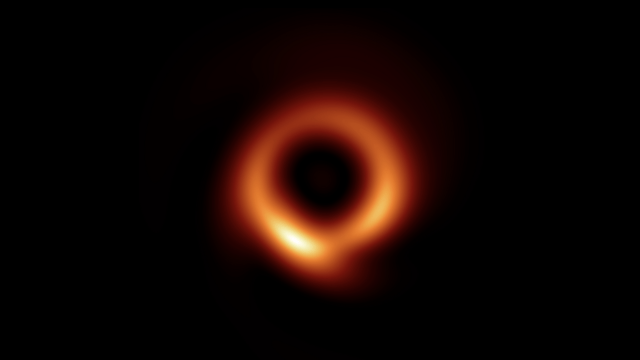Astronomers transfixed the public in April 2019 when they released the first-ever image of a black hole, produced by radio wave data from a collaboration of telescopes around the world known collectively as the Event Horizon Telescope.
Now, a team of physicists and researchers have developed the plans for the successor to that project: a $US300 million investigation of the photon rings that surround black holes. The project is called the Event Horizon Explorer, and it is scientists’ hopes that the mission will clarify some of the extreme physics at the limits of black holes’ inexorable grasp on light itself. You can read about the EHE mission concept here.
“What we are trying to do now is launch a space mission that would improve the sharpness of the EHT images by a factor of 10,” said Michael Johnson, an astrophysicist at the Harvard and Smithsonian’s Center for Astrophysics, told the Harvard Gazette.
A quick refresher: black holes are regions of space with such intense gravity that not even photons of light can escape their event horizons. Supermassive black holes, which can be anywhere from millions to billions of times the mass of our Sun, often reside at the center of galaxies, including at the heart of our own Milky Way. The EHT unveiled the first image of that black hole, Sagittarius A*, last year; you can read astronomers’ reactions to that image here.
Images of black holes really depict their “shadows,” or the region of space that is lightless. The areas surrounding many black holes are conversely very bright, as the compact objects are surrounded by superheated material drawn towards the holes by their gravity. These bright regions are called accretion discs; occasionally, material from the accretion discs fall into the black holes, causing outbursts of energy.
The researchers hope is that an Event Horizon Explorer would reveal black holes’ photon rings, made by photons of light forced into an orbit around the black hole by the behemoth’s tremendous gravity. Photon rings are not visible to the EHT at its current resolution, though researchers have managed to tease out magnetic field lines emanating from the telescope’s first target, the supermassive black hole M87.
Detectable photon rings would be evidence that black holes are spinning, distorting spacetime through their rotations. But in order to make such detections a reality, the EHE needs to be designed, with near-absolute-zero receivers and a large radio dish.
“Detecting the photon ring requires recording huge volumes of data on the spacecraft,” said Peter Galison, a physicist at Harvard University and the director of the university’s Black Hole Initiative. “We plan on using laser light to beam the information equivalent of the entire Library of Congress down to Earth.”
An Event Horizon Explorer mission would be pursuant to the goals of the National Academies of Sciences, Engineering, and Medicine’s decadal survey. Published in 2021, the survey outlined science objectives for the astronomical community through 2030. Chief among those goals was to better understand some of nature’s most extreme objects—namely the origins, growth, and collisions of black holes and neutron stars. Gaining a deeper insight into nature at its most colossal scale could greatly benefit subatomic and theoretical physics.
At the same time, radio astronomers with the International Pulsar Timing Array (IPTA) and its affiliated consortia are working to detect the gravitational wave background, the ceaseless ripples of spacetime likely produced by supermassive black hole binaries throughout the cosmos.
By imaging black holes and studying their far-reaching effects, physicists will get closer to understanding how just about everything works, at least on the supermassive and subatomic scales. But everything in between is just filler, right?
